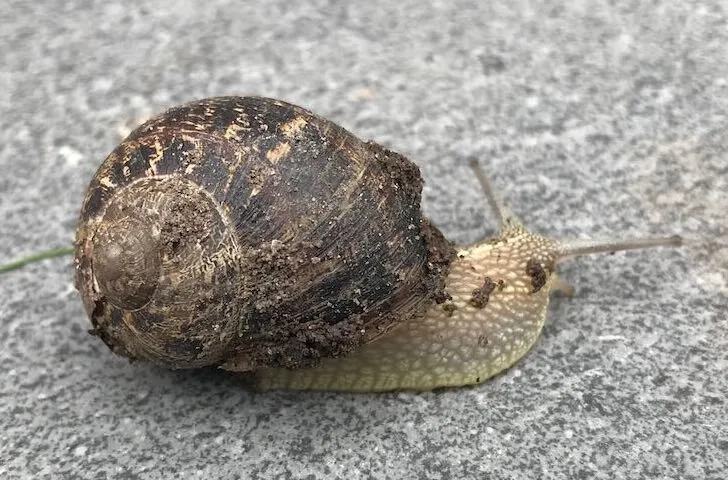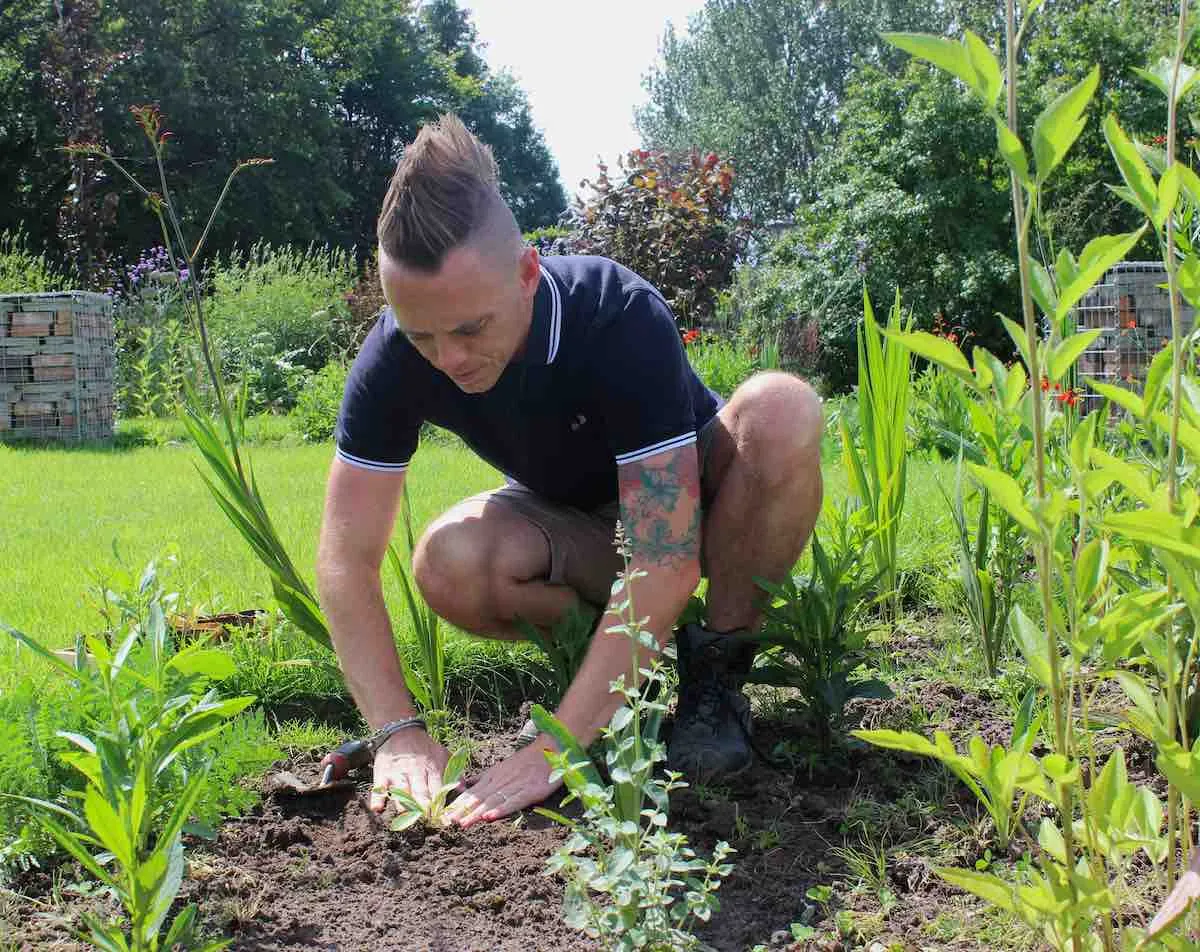Hi @sharony
Good question. Whilst there may be some dead snail shells in the compost, the best way to check if your compost has snail eggs in is to use a small garden hand fork and turn the compost over.
Snail eggs are translucence beads about half the size of a garden pea and a creamy colour. If they are there, simply flick them out and let the birds in your garden eat them.

I wouldn't bin the compost as it would be a complete waste. Even if you got rid of all of the eggs it's not going to totally banish snails. They are part of the garden ecosystem.
The best thing to do is use organic control methods, such as encouraging birds to the garden, having a pond to encourage frogs, or using materials around your prize plants to keep snails from trying to cross them!
Some top ways to manage snail numbers, though are:
-
Handpicking: Regularly inspect your garden and manually remove snails by hand, especially during early morning or late evening when they are most active.
-
Beer traps: Sink shallow containers filled with beer into the soil near susceptible plants. Snails are attracted to the beer and will crawl into the traps, where they drown.
-
Copper barriers: Surround vulnerable plants with copper tape or copper wire. When snails come into contact with copper, it gives them a small electric shock, deterring them from crossing the barrier.
-
Natural predators: Encourage natural predators of snails, such as birds, frogs, toads, and predatory insects like ground beetles and nematodes, to inhabit your garden.
-
Diatomaceous earth: Sprinkle food-grade diatomaceous earth around plants or on the soil surface. This natural substance contains sharp particles that pierce the snails' soft bodies, causing dehydration and death.
-
Eggshell barriers: Crushed eggshells create abrasive barriers that snails prefer not to cross. Scatter crushed eggshells around susceptible plants to deter snails.
-
Coffee grounds: Sprinkle used coffee grounds around plants. The caffeine in coffee acts as a natural repellent, deterring snails and slugs.
-
Citrus peels: Place citrus fruit peels, such as orange or grapefruit, around garden beds. Snails dislike the scent of citrus and will avoid areas with citrus peels.
-
Salt barriers: Create barriers around plants using table salt or rock salt. However, use salt sparingly, as it can harm soil and plants if applied excessively.
-
Companion planting: Plant snail-resistant species or varieties alongside susceptible plants to reduce the risk of snail damage. Some plants, like lavender, rosemary, and sage, have strong scents that repel snails.
Here is my guide on the best snail proof plants as well to help!
https://youtu.be/9pLKXgDsQuU
How do snails reproduce?
For interested Garden Ninjas, it's quite fascinating to understand how snails reproduce. So let's take a brief look at that so we can work out how to live with them rather than just destroy them!
Most snails are hermaphrodites, possessing both male and female reproductive organs. During mating, two snails exchange sperm with each other. This exchange allows both snails to fertilize their eggs internally. After fertilization, each snail lays eggs in a protected location, such as underground, in soil, or beneath leaf litter. The eggs hatch into tiny snails, which grow and develop over time, completing the reproductive cycle. Some snail species may also reproduce asexually, through a process called parthenogenesis, where unfertilized eggs develop into offspring without the need for mating.
I hope that helps!
Happy gardening
Lee Garden Ninja
Hi @sharony
Good question. Whilst there may be some dead snail shells in the compost, the best way to check if your compost has snail eggs in is to use a small garden hand fork and turn the compost over.
Snail eggs are translucence beads about half the size of a garden pea and a creamy colour. If they are there, simply flick them out and let the birds in your garden eat them.

I wouldn't bin the compost as it would be a complete waste. Even if you got rid of all of the eggs it's not going to totally banish snails. They are part of the garden ecosystem.
The best thing to do is use organic control methods, such as encouraging birds to the garden, having a pond to encourage frogs, or using materials around your prize plants to keep snails from trying to cross them!
Some top ways to manage snail numbers, though are:
-
Handpicking: Regularly inspect your garden and manually remove snails by hand, especially during early morning or late evening when they are most active.
-
Beer traps: Sink shallow containers filled with beer into the soil near susceptible plants. Snails are attracted to the beer and will crawl into the traps, where they drown.
-
Copper barriers: Surround vulnerable plants with copper tape or copper wire. When snails come into contact with copper, it gives them a small electric shock, deterring them from crossing the barrier.
-
Natural predators: Encourage natural predators of snails, such as birds, frogs, toads, and predatory insects like ground beetles and nematodes, to inhabit your garden.
-
Diatomaceous earth: Sprinkle food-grade diatomaceous earth around plants or on the soil surface. This natural substance contains sharp particles that pierce the snails' soft bodies, causing dehydration and death.
-
Eggshell barriers: Crushed eggshells create abrasive barriers that snails prefer not to cross. Scatter crushed eggshells around susceptible plants to deter snails.
-
Coffee grounds: Sprinkle used coffee grounds around plants. The caffeine in coffee acts as a natural repellent, deterring snails and slugs.
-
Citrus peels: Place citrus fruit peels, such as orange or grapefruit, around garden beds. Snails dislike the scent of citrus and will avoid areas with citrus peels.
-
Salt barriers: Create barriers around plants using table salt or rock salt. However, use salt sparingly, as it can harm soil and plants if applied excessively.
-
Companion planting: Plant snail-resistant species or varieties alongside susceptible plants to reduce the risk of snail damage. Some plants, like lavender, rosemary, and sage, have strong scents that repel snails.
Here is my guide on the best snail proof plants as well to help!
How do snails reproduce?
For interested Garden Ninjas, it's quite fascinating to understand how snails reproduce. So let's take a brief look at that so we can work out how to live with them rather than just destroy them!
Most snails are hermaphrodites, possessing both male and female reproductive organs. During mating, two snails exchange sperm with each other. This exchange allows both snails to fertilize their eggs internally. After fertilization, each snail lays eggs in a protected location, such as underground, in soil, or beneath leaf litter. The eggs hatch into tiny snails, which grow and develop over time, completing the reproductive cycle. Some snail species may also reproduce asexually, through a process called parthenogenesis, where unfertilized eggs develop into offspring without the need for mating.
I hope that helps!
Happy gardening
Lee Garden Ninja
 Lee Burkhill: Award Winning Designer & BBC 1's Garden Rescue Presenters Official Blog
Lee Burkhill: Award Winning Designer & BBC 1's Garden Rescue Presenters Official Blog



